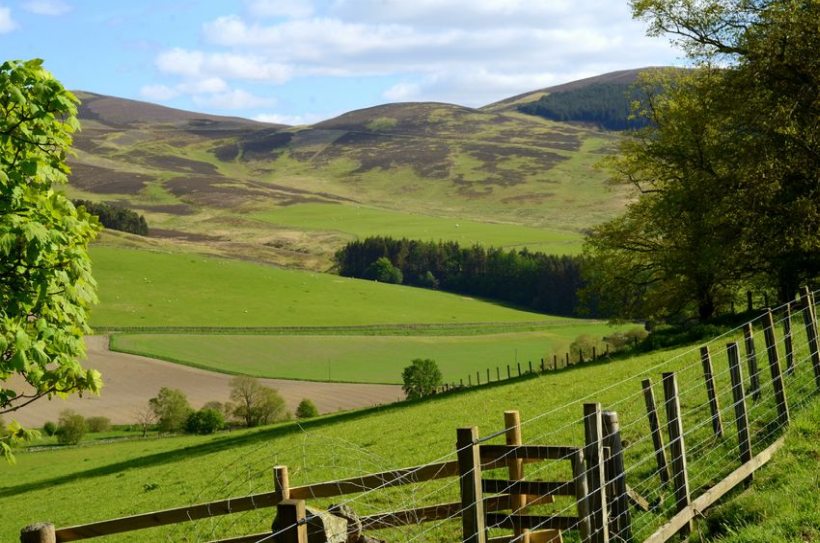
Demand for Scottish farmland outstripped supply in 2020 due to a combination of low volumes, an increase in lifestyle buyers and interest in land suitable for tree planting, according to new research.
Strutt & Parker's analysis of data from the past 12 months shows the performance of the farmland market was atypical relative to recent years, in terms of both supply and demand.
Supply of farmland to the open market in 2020 was the lowest on record, with just 13,100 acres advertised for sale compared with a five-year average of 32,800.
Diane Fleming, farm agent for Strutt & Parker in Scotland, explained that spring 2020 brought to the market the unknown world of lockdown and travel restrictions.
"Prospective sellers were also cautious to commit to selling faced with the additional uncertainties caused by Brexit and whether or not a trade deal with the EU would be agreed.
“Active buyers did not show the same restraint, competing vigorously for those farms available for sale, which saw demand quickly outstrip supply,” she said.
Analysis shows that 82% of farms marketed successfully found a buyer by the end of the year, up 26% on 2019, however more farms were marketed in 2019 than in 2020.
In addition, there was also a rise in the number of off-market deals, where vendors chose not to commit to open market advertising, but were prepared to accommodate buyer interest on a private basis.
It is estimated that up to 30 percent of farms for sale during 2020 were available on a private basis, Strutt & Parker's analysis says.
In general, competitive bidding was witnessed at closing dates and values above the asking price were achieved, although variable values were seen across different regions and types of land
Prime arable values remained particularly strong with the price of first-class arable land peaking at £16,000/acre due to a combination of low supply and high demand from successful agricultural businesses looking to expand.
Secondary arable values ranged from £3,000/acre to £6,000/acre, with grass leys achieving between £2,500/acre and £5,250/acre: overall, farmer buyers accounted for the majority of transactions during the year.
However, forestry buyers dominated when it came to hill ground: strong prices continue to be paid for land suitable for forestry planting.
Plantable hill ground is attracting prices of up to £3,000/acre, with the price paid by forestry buyers for hill ground anywhere up to 30 times higher than it was a decade ago: less productive grassland and even marginal arable ground can also attract interest from these buyers.
Ms Fleming said: “As seen in recent years, strong prices are continually paid for land with afforestation potential. Tree planting is backed by government support and afforestation commitments, in the quest to attain carbon neutrality.
"Private companies and investors are also keen to acquire forests, plant trees or purchase carbon credits to offset their carbon footprint.”
This ties in with the findings of the latest UK Forest Market Report, which saw average forestry values rise significantly in 2020 and the total value of the forestry investment market reach record levels.
Meanwhile, the pandemic led to a busy rural residential market in 2020 as people sought to realise their long-held dreams of owning a property in the countryside.
“Scenic and less-populated areas were more sought after, as were properties with land and more space to enjoy the outdoors,” said Ms Fleming.
“This in turn increased demand for small farms, as lifestyle, agricultural and investment buyers competed over fewer available properties.”
Looking ahead, she expects to see the balance between supply and demand become more even in 2021, with the supply of farms coming to the open market increasing.
“We are confident that the farmland market in 2021 will provide much more variety for purchasers, whilst continuing to deliver strong results for sellers.”
There was likely to be a continued shortage in the supply of prime arable land in the eastern counties, so it would continue to demand high values, as would land with potential for tree planting, she said.
Demand for smaller farms is also expected to remain strong, bolstered by demand from lifestyle buyers due to the Covid-effect, Ms Fleming added.
